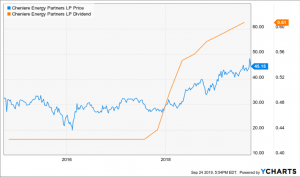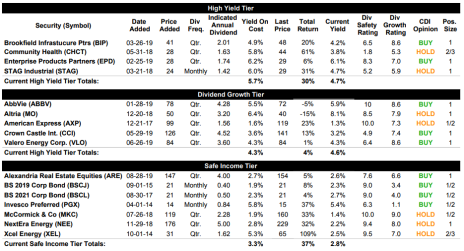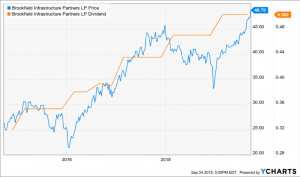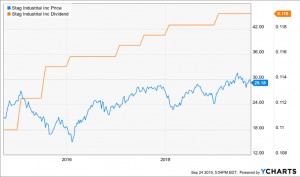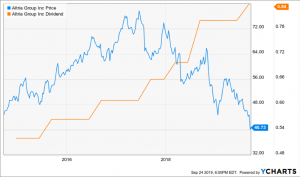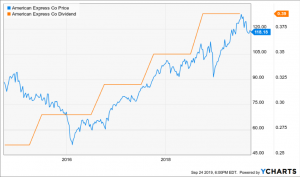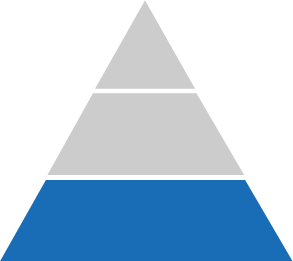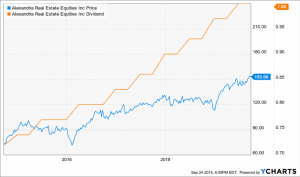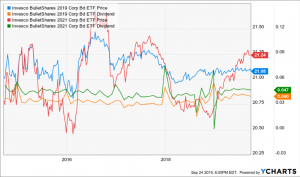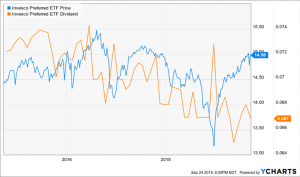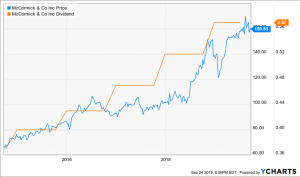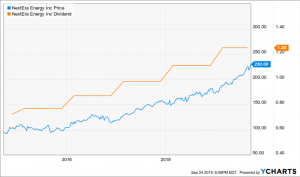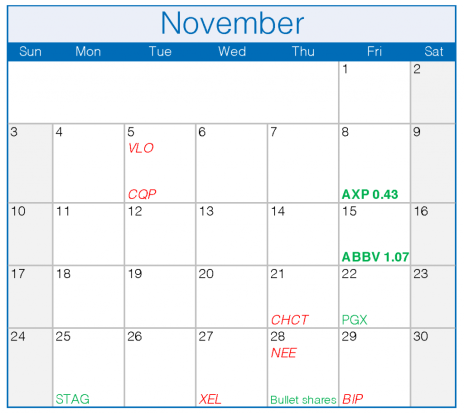A huge new industry is being born in American energy exports. Because of new technologies in fracking and horizontal drilling, America has gone from being hopelessly dependent on energy imports to the world’s preeminent energy powerhouse and the number one producer of both oil and gas in less than ten years. In order to export natural gas across the oceans, it needs to be converted to liquid form (LNG), loaded onto tankers and shipped overseas. Until recently, the US did not have the facilities necessary to do that. But one company was the first to have such facilities and it’s up and running. And business is booming with no end in sight. This month’s “featured buy” operates the first and largest US LNG terminal, while LNG is the fastest growing commodity in the world. The stock has blown away the returns of the S&P 500 at a time when stocks in the energy sector were the worst performing on the market. Yet the stock is still reasonably valued and pays monstrous and growing 5.15% yield.
Cabot Dividend Investor 919
[premium_html_toc post_id="187234"]
Profit from the American Energy Export Boom
One of the constants in life is change. The winds of change seem to swoop in and disrupt things we mistakenly consider permanent. Understanding exactly when and where such events occur is crucial to successful investing.
One such sweeping change can be found in the American energy industry.
Just ten years ago America was a country hopelessly dependent on unsavory foreign sources of oil and gas. The country was importing two thirds of the oil it consumed and sending about $400 to $500 billion overseas every year with no end in sight. Then, technology saved the day.
New technologies in hydraulic fracturing (fracking) and horizontal drilling enabled access to previously irretrievable sources of vast oil and gas deposits trapped in shale rock formations across the country. As a result, the U.S. went from being a hopelessly energy dependent country to the world’s preeminent energy powerhouse and the number one producer of both oil and natural gas in less than ten years.
It’s almost surreal. We have so much of the stuff now that we’re actually selling it to those unfortunate countries endowed with less energy. In fact, the U.S. was the world’s largest exporter of crude oil last month. Think about that. Until 2015 it wasn’t even legal for this country to export crude oil.
But the future belongs to the less understood side of the equation – natural gas.
Of the fossil fuels (oil, gas, coal), natural gas is by far the cleanest burning. That’s a big deal in an increasingly climate conscious world. Sure, clean energy sources like solar and wind are growing like crazy, and will one day replace fossil fuels. But cheap, widespread adaptation is still decades away. In the meantime, gas is a happy medium. And the world is taking notice.
Replacing coal with cleaner burning natural gas is burgeoning into a major global macro economic trend. Gas is by far the world’s fastest growing fuel source and, according to BP, global demand will grow 50% between now and 2040. And this country has way more natural gas than it can use.
Demand for natural gas is skyrocketing in other parts of the world. The export of abundant and cheap American natural gas to other parts of the globe where it fetches a much higher price is the fastest growing part of the American energy boom. And it’s the wave of the future. It’s also brand new.
Until 2016, this country did not have any facilities capable of exporting natural gas overseas. This month’s “featured buy” owns the first and the largest U.S. natural gas export facility. And business is booming with no end in sight.
The stock has blown away the returns of the S&P 500 at a time when stocks in the energy sector were the worst performing on the market. Yet the stock is still reasonably valued and pays a monstrous and growing 5.35% yield.
What to do now
The current market for the most part offers two basic choices; overpriced stocks with great momentum and underpriced stocks going nowhere. You can see it reflected in the portfolio. Defensive stocks like CHCT, CCI, ARE, MKC, NEE and XEL are selling near the high point of the historic ranges and don’t offer much of bargain but make up for it with relentless momentum. That said, ARE and CCI offer more reasonable valuations.
At the same time, portfolio positions ABBV, MO and VLO offer very compelling valuations but continue to underperform, although that situation may be turning around for ABBV and VLO. The current portfolio offers both sides of the equation. On the one hand, we don’t want to fight the tape and we’ll take what the market is giving. On the other hand, we want to be armed with good companies at compelling valuations that will likely benefit when the market changes. And it always does.
Right now there are a couple of stocks in the middle. BIP is still reasonably valued and offers good momentum. EPD is a huge bargain that the market hasn’t been treating badly. Therefore, I would buy those two stocks first if I were new to the portfolio today.
Featured Buy
Cheniere Energy Partners (CQP)
Natural gas production exploded 50% during the energy boom. But it was too much too fast and the country didn’t know what to do with all that gas. Oversupply caused a huge drop in price. The price of natural gas in the U.S., which averaged around $8 to $10 per MMbtu (million British thermal units) last decade, fell to just about $2 per MMbtu by early 2012 and is still under $3 as I write.
As a result, many wells were shut down. Production slowed. We became the largest natural gas producer in the world without even really trying. Meanwhile, the rest of the world is dying for the stuff.
Take China for example. A few years ago a study was done that rated the world’s ten most polluted cities. Ten of them were in China. The country is choking to death and in a race to convert older coal burning facilities to natural gas. Natural gas imports increased 48% in 2017 and 36% in 2018. According to the IEA, China will account for 40% of global natural gas demand growth between now and 2024.
In other places in Asia as well as Europe, natural gas is the most in-demand fuel source, often selling at prices four or five times higher than U.S. gas. It doesn’t take a genius to realize that we should sell our abundant, cheap natural gas to those places. But that is easier said than done.
You see, natural gas is normally transported via pipeline. But building pipelines across the oceans is impractical today. In order to export the stuff it has to be converted to liquid form (LNG), loaded onto tankers and shipped overseas. But this country didn’t have the massive liquefaction facilities and export terminals necessary to do the job, because until recently we just imported natural gas.
But things are changing.
Cheniere Energy Partners (CQP) is a Master Limited Partnership (MLP) that owns and operates this country’s first and largest liquid natural gas (LNG) terminal, Sabine Pass in Louisiana. It also operates regasification facilities and the Creole Trail Pipeline, which connects the terminal to third party gas suppliers. The U.S. Gulf coast is an ideal location with access to deep-water ports and pipelines to deliver gas.
CQP is an MLP (more on that later in the issue) of parent company Cheniere Energy (LNG), which owns several other facilities and markets LNG worldwide. CQP only operates Sabine Pass and its support facilities. It’s important to note that CQP only collects fees for the service of LNG processing as well as ship loading and unloading. It has zero exposure to volatile commodity prices.
It can be a great story. And LNG exports can be booming. But if commodity prices move the wrong way a company in the business can perform poorly. CQP is a pure play on the growth of U.S. natural gas exports and benefits solely and directly from the strong and growing demand. And LNG is the world’s fastest growing commodity.
CQP opened the first LNG terminal in 2016. That’s when the first train was operational. A train is industry jargon for a facility that turns natural gas into liquid form. CQP now has five trains up and running with one more on the way in the next year or two. CQP currently delivers to 31 countries and also has plenty of available land for future expansions.
Sabine Pass is no longer the country’s only LNG terminal. Others have opened and there are more on the way. But that isn’t really a threat. There is still more than enough business to go around. As well, Cheniere was first to the party and has roughly 88% of its business guaranteed with long-term contracts from highly rated customers.
As an MLP, CQP pays a strong quarterly distribution with a current yield of 5.35%. But the payout has grown 8.8% over the last three years and should continue to grow in the future.
The formula of steady revenue from existing customers and growth from expanding facilities is working well. Revenue has grown by an average of 187% per year for the last three years and the stock has returned an average of over 20% over the last three years while its peer group has averaged just 2.74%. Yet the stock still sells at valuations below the five-year average.
Cheniere Energy Partners (CQP)
Industry: Natural gas exporting
Price: $45.15
52-week range: $32.55 - $49.30
Yield: 5.35%
Profile: Cheniere Energy Partners is an MLP that operates Sabine Pass, the nation’s largest natural gas export facility.
Positives
- Abundant cheap US gas supply and high prices overseas provides strong demand.
- The stock is performing well in a bad market for energy stocks.
- Long-term contracts provide a predictable cash flow.
- The company isn’t exposed to volatile commodity prices.
Risks
- The company has a large amount of debt from the terminal build out.
- There is operational risk from maintenance and shutdowns.
- Delays in bringing new facilities on line could negatively impact the stock.
Portfolio at a Glance
Portfolio Updates
High Yield Tier
The investments in our High Yield tier have been chosen for their high current payouts. These ?investments will often be riskier or have less capital appreciation potential than those in our other ?two tiers, but they’re appropriate for investors who want to generate maximum income from their? portfolios right now.
BUY – Brookfield Infrastructure Partners (BIP 48 – yield 4.2%) – The infrastructure MLP has stabilized since making new all time highs in the beginning of the month. It’s up about 25% over the past year compared to just 1.62% for the S&P 500. And it’s still selling below most of its 5-year valuations, a period in which the stock averaged a 15.5% average annual return. High dividend stocks with defensive businesses are in vogue right now, as is the infrastructure subsector. It also helps that new assets coming on line should continue to boost earnings in the quarters ahead.
HOLD – Community Health Trust (CHCT 44 – yield 3.8%) – This small healthcare REIT is up 54% so far this year. It’s a great REIT, but probably not that good. The market loves REITs right now and may continue to for a while. I believe the stock is overvalued at this point. However, it’s still technically strong and looks like it wants to go higher. I may consider selling ahead of the next earnings report, but for now I’ll let it ride.
BUY - Enterprise Product Partners (EPD 29 – yield 6.1%) – This energy infrastructure giant is also getting in on the LNG craze. It announced it is expanding a pipeline system to bring gas from the shale regions to LNG facilities in the Gulf of Mexico. While the stock has been stuck in the mud between 28 and 30 for some time, it has done so in a lousy market for energy stocks. This is a blue chip energy company that is growing earnings as new projects come on line. The stock price is still 30% below the 2014 high while earnings have grown 11% per year over those five years and should accelerate going forward. Eventually the market will figure it out and it’s easier to be patient with a 6% yield.
HOLD – STAG Industrial (STAG 29 – 4.7%) – This industrial REIT, and monthly dividend payer, should continue to hold its own for the foreseeable future. While the stock has outperformed the market over the past year, it has underperformed its REIT peers. The reason is likely because it is in a more cyclical REIT sector, which should give it more upside than its peers if the market rallies. It also pays a sizable yield with a monthly payout.
Dividend Growth Tier
To be chosen for the Dividend Growth tier, investments must have a strong history of dividend increases and indicate both good potential for and high prioritization of continued dividend growth.
BUY – AbbVie (ABBV 72 – 5.9%) – This is a great biopharmaceutical company selling at a silly cheap price. Investors seem to be pricing in a worst-case scenario on several fronts. But the pipeline continues to kick butt and the Allergan deal is better than most think. I’m not the only one who thinks these things. Insiders have been buying up the stock. As Peter Lynch once said, insiders sell company stock for many reasons but they only buy if they think it’s going higher. It may be perking up. It’s up over 10% in the past month. It will catch eventually. In the meantime, you get a sweet 6% yield.
HOLD – Altria (MO 40 – 8.1%) – Let the bad times roll. E-cigarette maker JUUL, in which Altria bought a considerable stake earlier this year, continues to wallow in headline and regulatory hell. In the past couple of weeks more news of lung disease from vaping has surfaced and now Federal prosecutors are after JUUL, conducting a criminal probe. The stock is ridiculously cheap with a safe 8% yield, but it keeps getting cheaper. It’s hard to see how the stock can move higher against a barrage of constant negative headlines. That said, the stock should get a bounce back from the current five year low as the company continues to make money.
HOLD – American Express (AXP 119 - yield 1.3%) – The credit card giant continues to reward shareholders. After returning 41% of capital generated to shareholders in 2018, AXP just announced a 10% hike to the quarterly dividend to $0.43, payable on November 8th, following an 11.4% hike in August. The company also announced a buyback plan of 120 million shares. The company has been strong operationally and should have another solid quarter when it reports next month.
BUY – Crown Castle International (CCI 141 – yield 3.2%) – Markets go up and down. Different sectors go in and out of favor. But the 5G infrastructure build-out continues in haste no matter what. Crown Castle will continue to have all the business and growth opportunities it can handle. It’s a great stock to own any time, but in this market in particular. It’s a rock-solid REIT with steady income and good operational performance in a market that loves safer plays. It also provides strong growth.
BUY – Valero Energy Corp. (VLO 84– yield 4.3%) – The stock of this refiner is up 18% since late August. But it is still within the same range it has traded for most of the year. A breakout above 90 would represent a much more significant move. Valero is a prize pick in the sector as 2020 is shaping up to look like a much more prosperous year for refiners. The stock is dirt-cheap still, trading 30% below the 52-week high, and over the last six months six analysts have upgraded the stock to a BUY rating with an average target price of just under 100.
Safe Income Tier
The Safe Income tier of our portfolio holds long-term positions in high-quality stocks and other investments that generate steady income with minimal volatility and low risk. These positions are appropriate for all investors, but are meant to be held for the long term, primarily for income—don’t buy these thinking you’ll double your money in a year.
BUY – Alexandria Real Estate Equities (ARE $154 – yield 2.6%) – The stock continues to slowly forge to new all time highs no matter what the market throws at it. High occupancy rates for its in-demand unique laboratory properties make this stock a favorite in the current environment. It has significantly outperformed both the overall market and the REIT index in every measurable period over the last five years. Falling interest rates should be a tailwind for the stock going forward.
BUY- Invesco BulletShares 2019 Corporate Bond ETF (BSCJ 21 – yield 2.3%)
BUY – Invesco BulletShares 2021 Corporate Bond ETF (BSCL 21 – yield 2.7%)
These bonds remain steady and predictable, just like they’re supposed to. They just keep rolling on at a steady price paying interest. These short term investment grade rated corporate bond ETFs don’t pay much yield but they come as advertised, with consistent income and virtually zero volatility.
BUY – Invesco Preferred ETF (PGX 15 – yield 5.4%) – This preferred stock ETF has been a rock as well. It is a high yielding, safe haven port in an uncertain market. The lack of correlation to the stock and bond markets makes this a fantastic way to diversify. The falling interest rates make it even more attractive on a relative basis. If you’re looking for a stable price and a strong yield this is a great holding and should be for a while.
HOLD – McCormick & Co (MKC 160 – yield 1.4%) – After a brief pullback the stock is back on track. I consider this spice maker perhaps the best of all the food stocks. It’s defensive and more profitable than its peers. It is however selling at above normal valuations. I will cautiously continue to hold the one half position into the third quarter earnings report next Tuesday because this is still a market that continues to reward defensive dividend payers and there is no reason to expect anything but strong performance.
HOLD – NextEra Energy (NEE 228 – yield 2.2%) – This largest of all utilities, with more growth than its peers courtesy of its alternative energy business, continues to forge to new all time highs with a flawless chart. The market continues to fawn all over safe dividend paying stocks, but especially the best ones. NextEra’s combination of reliable income from the regulated side combined with the growth in the alternative energy business is a recipe right in the current market’s wheelhouse. It’s getting a little pricey and that’s why it’s only rated a HOLD, but the stock is showing uncanny momentum with no signs of slowing.
HOLD – Xcel Energy (XEL 65 – yield 2.5%) – Everything I just said about NEE is true of XEL. It offers a combination of steady and reliable earnings and a higher level of growth from clean energy. It’s also a darling of the regulators, which makes a big difference. And the current market has a crush on it. The only negative is that the stock is a little overpriced right now. It offers momentum and reliable earnings and growth but not great value. That’s why is just rated HOLD. But I’ve been saying the same thing for many months now and all the stock does is forge higher. Let’s let it ride.
Dividend Calendar
Ex-Dividend Dates are in RED and italics. Dividend Payments Dates are in GREEN. Confirmed dates are in bold, all other dates are estimated. See the Guide to Cabot Dividend Investor for an explanation of how dates estimated.
MLP Alternatives
Several portfolio positions that I have recommended are Master Limited Partnerships (including BIP, EPD and new addition CQP). These are securities with special tax status granted to encourage the build-out of energy infrastructure and other things. But I understand they are a problem for some subscribers.
MLPs pay no income tax at the corporate level provided they pay out the bulk of their earnings in the form of distributions. For this reason they generally pay a higher level of income than ordinary corporations because they can pay out money not lost to taxes. The distributions themselves have different tax properties, as a sizable portion are treated as return of capital. But they also require filing a special tax form, K-1, with your taxes.
It’s a pain in the neck and one more piece of minutia to worry about at tax time. I understand some subscribers hate it. Also, they can cause a taxable event in a tax deferred retirement account if your holdings are big enough. Unrelated business taxable income (UBTI) can be generated on income over $1000 per year in a retirement account. I’ve also seen cases where people living abroad cannot own MLPs.
I sometimes chose to recommend MLPs despite these things because when choosing a recommendation I bow to the god of best potential investment return above all else. But if you are someone who can’t buy an MLP or you just don’t want to, CDI loves you too. For that reason I will suggest investment alternatives that offer many of the same benefits as the current MLP recommendations, but are regular corporations.
Here are two stocks I would seriously consider adding to the portfolio if the currently recommended MLPs didn’t exist.
Kinder Morgan (KMI)
Kinder Morgan is a huge U.S. energy infrastructure company, much like EPD. The company is involved in the transportation, storage, and processing of natural gas, crude oil and refined products. But the emphasis is on natural gas, where it is the biggest player in the country. Although not a direct play on the growing LNG export market like CQP, it is a beneficiary.
KMI used to be an MLP but converted to a regular corporation a few years ago. U.S. energy production is booming at record levels. KMI is not highly exposed to commodity prices but rather generates the bulk of revenues from fees for piping and storage. The stock got crushed in the oil price crash between 2014 and 2016 and the stock price has still not recovered while earnings have.
The stock price is more than 50% below the 2015 high. It offers exposure to the U.S. energy boom, a compelling valuation and a strong 4.86% dividend yield.
Williams Companies (WMB)
Williams is also a big player in U.S. energy infrastructure. It operates a vast pipeline network and related natural gas gathering, processing and storage assets. This company also generates revenues from service fees rather than relying on volatile commodity prices and is structured as a regular corporation.
It offers many of the same advantages of EPD and KMI in that it benefits from the energy boom, sells at a cheap price and pays a fat dividend, 6.26%. The main reason I suggest WMB is because it is very highly leveraged to LNG exports. It is a major supplier to the LNG terminals and should benefit as that business booms.
You may ask why I didn’t recommend these companies in the portfolio. It’s because I like EPD and CQP better. Unlike EPD, these stocks didn’t pass the stress test during the oil price crash and industry carnage. They cut their dividends and the stocks got destroyed. EPD actually continued to raise its dividend through the whole thing and the stock held up much better.
I also like CQP better because it is a pure play on the growing LNG export market. I think the story is so good that I don’t want anything else messing it up.
The next Cabot Dividend Investor issue will be published on October 30, 2019.
Cabot Wealth Network
Publishing independent investment advice since 1970.
CEO & Chief Investment Strategist: Timothy Lutts
President & Publisher: Ed Coburn
176 North Street, PO Box 2049, Salem, MA 01970 USA
800-326-8826 | support@cabotwealth.com | CabotWealth.com
Copyright © 2019. All rights reserved. Copying or electronic transmission of this information is a violation of copyright law. For the protection of our subscribers, copyright violations will result in immediate termination of all subscriptions without refund. No Conflicts: Cabot Wealth Network exists to serve you, our readers. We derive 100% of our revenue, or close to it, from selling subscriptions to its publications. Neither Cabot Wealth Network nor our employees are compensated in any way by the companies whose stocks we recommend or providers of associated financial services. Disclaimer: Sources of information are believed to be reliable but they are not guaranteed to be complete or error-free. Recommendations, opinions or suggestions are given with the understanding that subscribers acting on information assume all risks involved. Buy/Sell Recommendations: All recommendations are made in regular issues or email alerts or updates and posted on the private subscriber web page. Performance: The performance of this portfolio is determined using the midpoint of the high and low on the day following the recommendation. Cabot’s policy is to sell any stock that shows a loss of 20% in a bull market or 15% in a bear market from the original purchase price, calculated using the current closing price. Subscribers should apply loss limits based on their own personal purchase prices.


